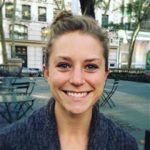Public policy impacts how we will work as future physicians and the choices we will have for offering care to our patients, yet navigating how policy gets created and figuring out how to best advocate for our patients and ourselves can be daunting. I recently had the pleasure of (virtually) asking Arizona Medical Association (ArMA) Medical Student Director and MS4 Spencer Bayless about his involvement in policy and advocacy work and for advice for those of us who want to become more involved but aren’t quite sure where to start.
– What roles have you held, and how did you get into these?
I was involved in a lot of different advocacy projects prior to medical school and knew this was something I wanted to continue. After talking with a few students who were currently on the Arizona Medical Association – Medical Student Section (ArMA-MSS) general council I decided this was a great opportunity to do that. As an MS1 I served as the Advocacy Vice-Chair with the ArMA-MSS. MS2 I served as the Vice-Chair of the ArMA-MSS. During MS3 I was offered to serve as one of two Medical Student Directors on the ArMA board of directors and I’ll continue in this role through MS4.
– Was there something specific that got you active in policy/advocacy, or have you always been involved?
My initial interest came from personal experience with our healthcare systems as a teenager, watching my parents navigate them. I wanted to understand the economics behind healthcare in the United States and that sort of led to a passion for advocating for more equitable, accessible, and affordable care for patients.
– About how much time (per week, per month) would estimate you spend either in your roles or keeping up with things?
I’d say it really depends. There are ebbs and flows. For example, in Arizona the legislative session begins in early January and that demands a little more time to keep up with what’s being introduced and any policy initiatives I’m involved with. There’s also two American Medical Association conferences a year, June and November, and an ArMA annual meeting which require some extra time based on how involved you want to be in policy writing/review. Overall though I’d say I spend around 10 hours a month on average, sometimes more.
– What resources do you use to stay up to date, and what would you recommend are “basics” for anyone interested in getting more involved?
So something I tell anyone looking to get involved in advocacy and policy, there’s a big learning curve that can be intimidating. It can feel like a different language. There’s all these rules and procedures you’ve never heard of. But, everyone has felt that way. Personally I think the best way to start understanding the basics is to get involved in some advocacy or policy topic you’re passionate about and ask a lot of questions along the way. As far as advocacy, there’s so many ways to be an advocate, I don’t think you need any specific knowledge to get started. But, in terms of policy, understanding what a resolution is, how it’s reviewed and voted on would be helpful.
Some resources I use to stay up to date on policy happenings is legiscan.com. Great site with all the information you’d want for every bill introduced in the state. For national news I like the site allsides.com; they publish news stories from the left, center and right of the political spectrum side-by-side so you can see the full picture. I also like to keep up with what’s going on within the American Medical Association and our local medical societies, and they all have a news page on their sites.
– What are some topics you are currently watching?
Times are crazy right now, as we all know. So, I’m definitely watching the hot button, and very important, topics like gun control, women’s rights, and racism in America. I’m also very passionate about mental health, so I’ve been keeping an eye on the national discussions around funding along with reform in Arizona. Specifically, I’ve kept my eye on HB2429 (health professional wellness programs; confidentiality) during this legislative session. It was recently passed and signed into law by the Governor. Introduced by Representative Shah, this legislation will allow certain non-profits to establish confidential programs for physicians and nurses seeking treatment for common mental health challenges like burnout and anxiety.
– With your experience, do you see certain medical/surgical specialities that would be more suited for someone who wants to be involved as a resident and beyond?
I think that anyone with a desire to advocate for others and come up with unique solutions to the problems facing our communities is suited to be involved. Knowing what it takes to get into and through medical school, I’d say that pretty much describes everyone. However, there is the time component that will limit the depth of involvement for those in certain specialties. Yet, I’ve been to many ArMA and AMA conferences and worked on various projects with physicians from just about every specialty. I think there’s so much value in this. Not only do we all bring unique life experiences that afford unique perspectives on issues, but also unique experiences and expertise within medicine that creates the perfect opportunity for teams of physicians to tackle some of our communities biggest problems.
– What would your TL;DR be for people who want to get involved, but don’t know where to start?
One of my best friend’s and mentor’s favorite quotes is “The journey of a thousand miles begins with one step” (Lao Tzu). Maybe a little melodramatic here but the point still applies, just take the step of reaching out to me or someone else involved. We’ve been where you’re at and would love to help.
– Anything else you’d like to share or think would be helpful for others to know?
Most of all I’d just like to share how important I think advocacy and policy is to the medical profession. Most of us, if not all, go into medicine due to some desire to help others during the scariest, most stressful, moments of their lives. But, the opportunity to help isn’t limited to providing medical treatment. We are equipped with the knowledge and resources to take steps through advocacy projects and/or policy initiatives to help alleviate so much of what brings harm to others. Our role as healers doesn’t stop in the clinic, or wards, or operating room. We can bring healing in so many ways that doesn’t involve medical treatment.
—
Many thanks to Spencer for his time and incredibly thoughtful answers. He can be reached at spencerbayless@email.arizona.edu with any additional questions.
Ann Staudinger Knoll is a member of The University of Arizona College of Medicine - Phoenix Class of 2023. After graduating from the University of Montana - Bozeman with a degree in Chemistry, she lived with her spouse and two perfect cats in New York City for six years before moving to the dusty Southwest for medical school. She enjoys volunteering, staying up to date on new films and tv shows, and eating any and every dessert.


